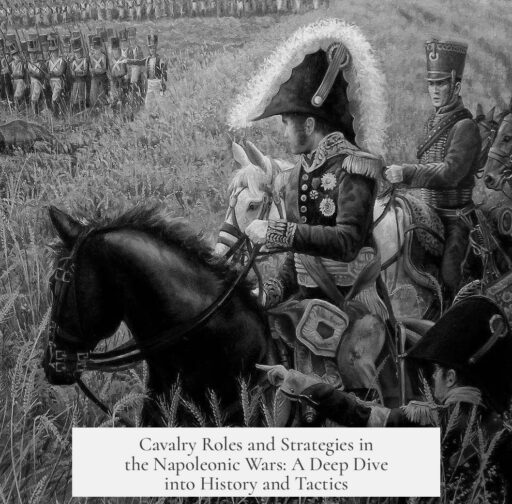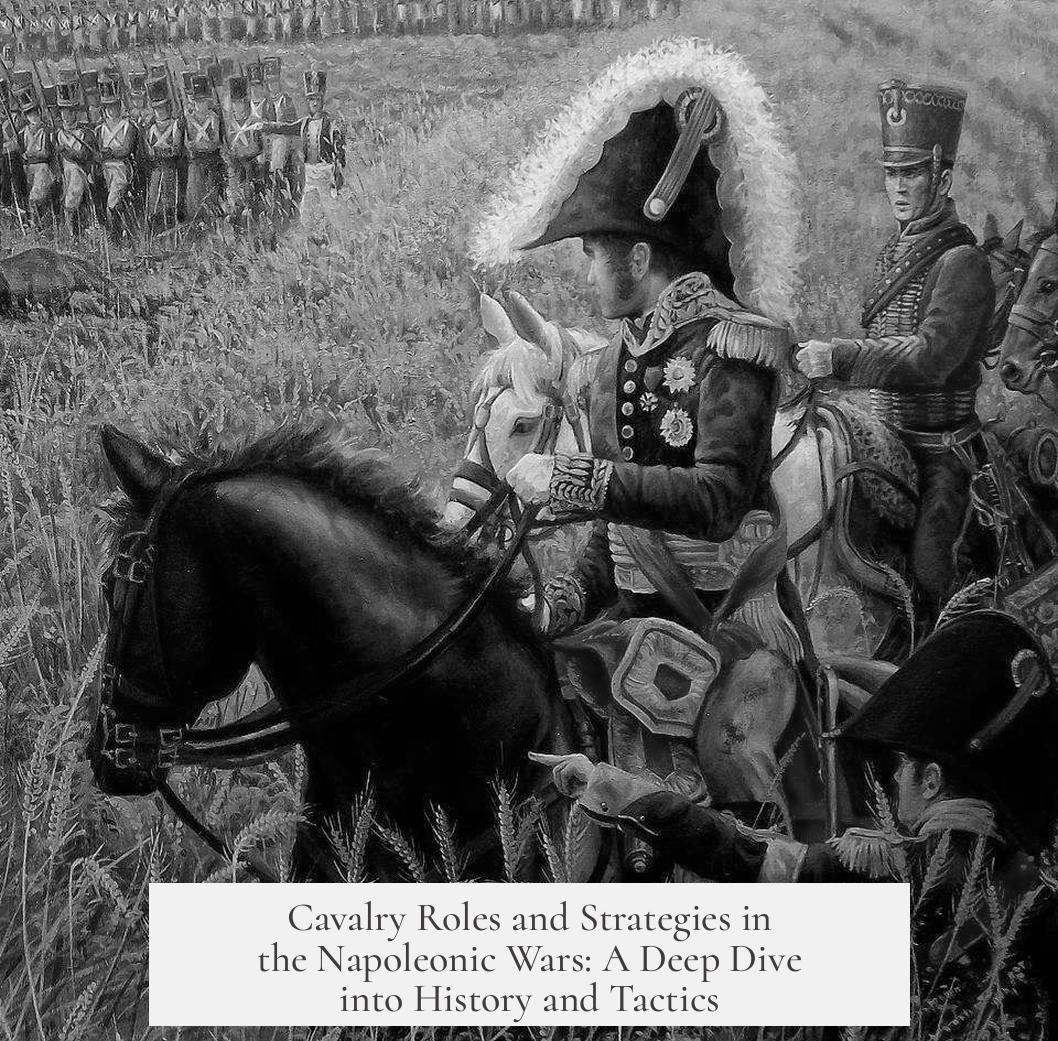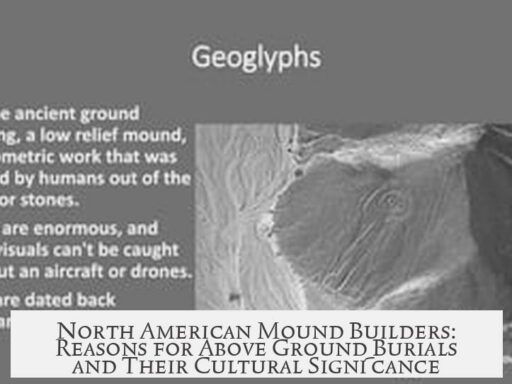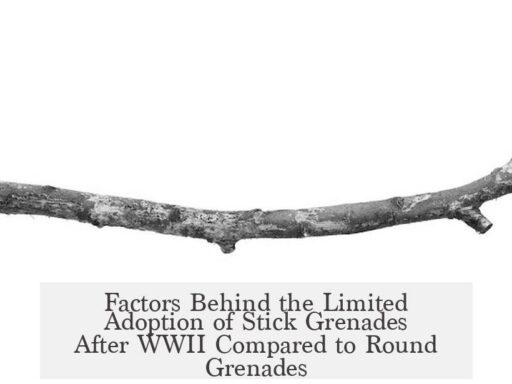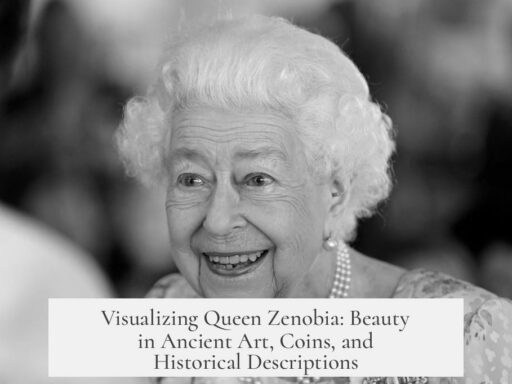Cavalry in the Napoleonic Wars played a vital and diverse role on the battlefield, divided primarily into heavy and light cavalry units, each fulfilling distinct tactical purposes.
Heavy cavalry consisted of large, strong men mounted on powerful horses. Their main task was to execute forceful shock charges against enemy lines. Light cavalry, in contrast, rode smaller, faster horses and handled reconnaissance, screening, raiding, pursuit, and escort roles. Both types were crucial for battlefield dominance in the period.
The heavy cavalry featured several key regiments:
- Cuirassiers: These were the premier heavy cavalry units in France (post-1801), Austria, Prussia, Russia, and Saxony. Originating in 17th-century Central Europe, cuirassiers initially wore three-quarter armor and were pistol-armed. Over time, their armor reduced to a helmet and breastplate. The French cuirassiers uniquely wore armored backplates, offering more protection but added weight on horses.
- Unarmored Cavalry: Several armies named their heavy cavalry simply “Cavalry,” usually without armor. This included French units before 1801, Spanish Caballeria, Savoy Cavalleria, and those from other European states. French cavalry before the rise of cuirassiers acted as shock troops though lacked armor until Napoleon’s reforms.
- Carabiniers: Originating from elite companies armed with carbines attached to heavy cavalry, carabiniers evolved into regiments with high status. By the Napoleonic Wars, they resembled unarmored heavy cavalry. France had two regiments, which Napoleon equipped with cuirasses from 1810. Austria and other nations also fielded carabiniers, sometimes converting them to cuirassiers.
- Dragoons: Dragoons began as mounted infantry but became cavalry during the 1700s. Mounted on smaller horses with simpler gear, dragoons were versatile and cheaper to maintain than cuirassiers. They combined mobility with enough firepower to support light cavalry, often performing screening or tactical attacks. The French dragoons retained some infantry musketry traditions, initially performing poorly in notable battles but proving effective in the Peninsular War and Napoleon’s later campaigns.
- Horse Grenadiers: Elite cavalry formed from grenadier infantry troops, horse grenadiers wore distinctive headgear, like bearskins. They were rare and typically part of elite guards. Napoleon’s Imperial Guard held the famous Grenadiers à Cheval, the senior cavalry regiment formed from former dragoons. They exemplified elite shock cavalry in the French army.
Guard cavalry held special status across armies and carried prestigious titles such as Garde du Corps, Life Guards, or Gendarmes. These units often wore expensive, ornate uniforms and fought as cuirassiers. The British Household Cavalry, notable for its role in the wars, remained unarmored until receiving cuirasses after Waterloo.
A summary of cavalry roles and types during the Napoleonic Wars highlights their battlefield function:
| Cavalry Type | Characteristics | Main Roles | Examples |
|---|---|---|---|
| Heavy Cavalry | Large men, heavy horses, armored or unarmored | Shock charges, breaking enemy lines | Cuirassiers, Carabiniers, Unarmored Cavalry |
| Light Cavalry | Smaller, fast horses, less armor | Scouting, screening, pursuit, raiding | Hussars, Chasseurs, Lancers |
| Dragoons | Smaller horses, cheaper gear, versatile | Mobility, screening, occasional shock action | French Dragoons, Various European armies |
| Horse Grenadiers | Elite, distinct headgear, guard units | Elite shock cavalry, guard duties | Imperial Guard’s Grenadiers à Cheval |
| Guard Cavalry | Elite status, ornate uniforms, mostly cuirassiers | Elite protection, battlefield shock role | British Household Cavalry, Garde du Corps |
Napoleon’s reforms transformed many French heavy cavalry units by equipping them with cuirasses, enhancing their battlefield durability. Dragoons, despite initially poorer performance in some battles, demonstrated adaptability and became a backbone in campaigns such as Spain. Light cavalry maintained crucial reconnaissance and screening functions, spotting enemy movements and protecting infantry formations.
The contrast between cavalry categories lies in their tactical employment:
- Heavy cavalry thrived in frontal assaults, using mass and momentum.
- Light cavalry excelled in mobility, gathering intelligence and harassing foes.
- Dragoons bridged roles, adding flexibility to forces.
- Guard and elite units served both tactical and morale functions, often on key points of the battlefield.
This spectrum of cavalry types allowed Napoleonic armies to exploit speed, shock power, and intelligence simultaneously. Cavalry charged to break enemy lines and supported infantry advances. Reconnaissance by light cavalry shaped decisions. Heavy cavalry’s psychological impact and physical force proved decisive in many engagements.
Key Takeaways:
- Cavalry divided into heavy (shock troops) and light (scouts and raiders) with dragoons bridging roles.
- Heavy units included cuirassiers, carabiniers, and unarmored cavalry—key in battlefield charges.
- Dragoons were versatile and widespread, combining shock and scouting roles.
- Horse grenadiers and guard cavalry were elite shock troops with prestigious status.
- Napoleon’s reforms increased armor use, especially in French heavy cavalry.
- Cavalry’s combined roles provided battlefield intelligence, rapid attack, and psychological advantage.
The Cavalry in the Napoleonic Wars: More Than Just Horses Charging Wildly
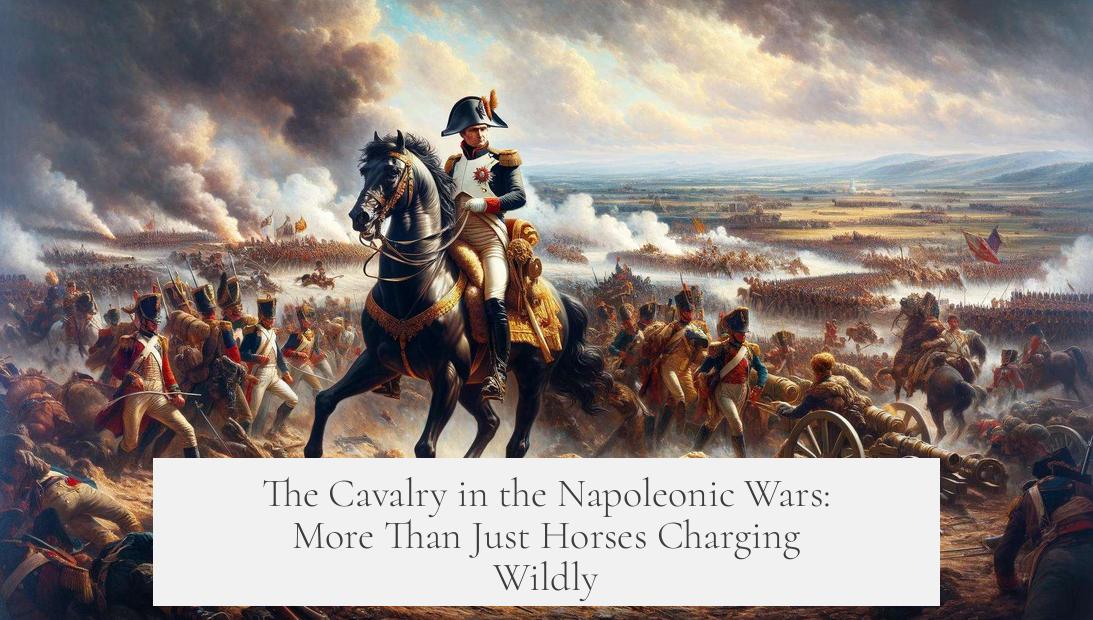
The cavalry in the Napoleonic Wars plays a starring role on the battlefield, combining speed, strength, and shock tactics to change the course of fights in an instant. But this wasn’t just about noble knights galloping with lances. The cavalry was a complex collection of different types of units, each with distinct roles and gear. Let’s dive into this hooved drama and see what made the cavalry tick during Napoleon’s era.
Heavy vs. Light Cavalry: The Basics
Think of Napoleon’s cavalry like an action movie crew with different specialties. The heavy cavalry was the muscle group. Mounted on big, strong horses, they were designed for crushing shock charges—smashing right through enemy lines. These riders wore armor (sometimes) and carried swords to deliver gut-punches in battle.
On the flip side, light cavalry was the reconnaissance team. Smaller, faster horses carried these troops who scouted, screened armies, raided enemy camps, and pursued fleeing foes. If you wanted eyes and ears on the battlefield, light cavalry was your go-to.
Heavy Cavalry: The Titans of Horseback
Within heavy cavalry, several categories existed, each with unique origins and equipment.
- Cuirassiers: The heavy hitters of the cavalry. These guys wore breastplates and helmets, sometimes even backplates, giving them extra protection. The French pushed the envelope by adding backplates, which improved safety but tired out their horses faster and were costly to maintain. Cuirassiers appeared in France (post-1801), Austria, Prussia, Russia, and Saxony.
- Cavalry (Unarmoured Heavy Cavalry): Before 1801, the French cavalerie regiments, ironically called light cavalry due to lack of armor, functioned as shock troops. Other nations, like Spain and Portugal, had heavy cavalry simply titled Caballeria or Cavalleria without the fancy armor. These troops still charged hard but relied on speed and mass instead of protection.
- Carabiniers: Once elite picks armed with carbines and attached to heavy cavalry regiments, by the Napoleonic Wars they essentially merged with heavy cavalry ranks. The French, for example, gave their carabiniers cuirasses by 1810, elevating their prestige and protection. Austria, Spain, and the Netherlands had their own carabinier units too.
- Dragoons: Originally mounted infantry in the 17th century using smaller nags, dragoons evolved into versatile cavalry. They were cheaper to maintain, armed sometimes with muskets, and formed the backbone of many armies’ cavalry. The French dragoons were considered underwhelming early on but proved their worth in Spain and Napoleon’s final campaigns. Napoleon cleverly deployed dragoons to stiffen French cavalry lines and mix mobility with power.
- Horse Grenadiers: Fancy headgear alert! Horse Grenadiers were often elite troops, originally grenadiers who took to horseback. Napoleon’s Grenadiers à Cheval were part of his Imperial Guard—the crème de la crème. These guys sported bearskins or mitres and acted as shock troops too, though they came from common roots rather than noble blood.
- Guard Cavalry: These were the celebrity cavalry, with names like Garde du Corps, Life Guards, or Horse Guards. Often outfitted like cuirassiers but in spectacular uniforms, they were highly prestigious. The British Household Cavalry, surprisingly, did not wear armor during the wars but upgraded post-Waterloo—talk about fashion catching up after the fight!
Why So Many Types? The Strategic Rationale
Napoleon’s wars weren’t just brute force clashes but masterclasses in combined arms. Heavy cavalry blasted open enemy formations with thunderous charges, breaking lines and morale. But that’s not all—light cavalry scouted ahead, gathered intel, raided supply lines, chased down fleeing enemies, and performed sneak attacks. Dragoons fit versatility like a glove, able to support both heavy and light cavalry, bridging gaps.
Imagine a battlefield with French cuirassiers smashing a fragile enemy center, while dragoons shield the flanks, and light cavalry hound retreat routes. This orchestration turned cavalry into indispensable, flexible forces, not just glorified horse-riding knights.
Lessons From Historical Battles
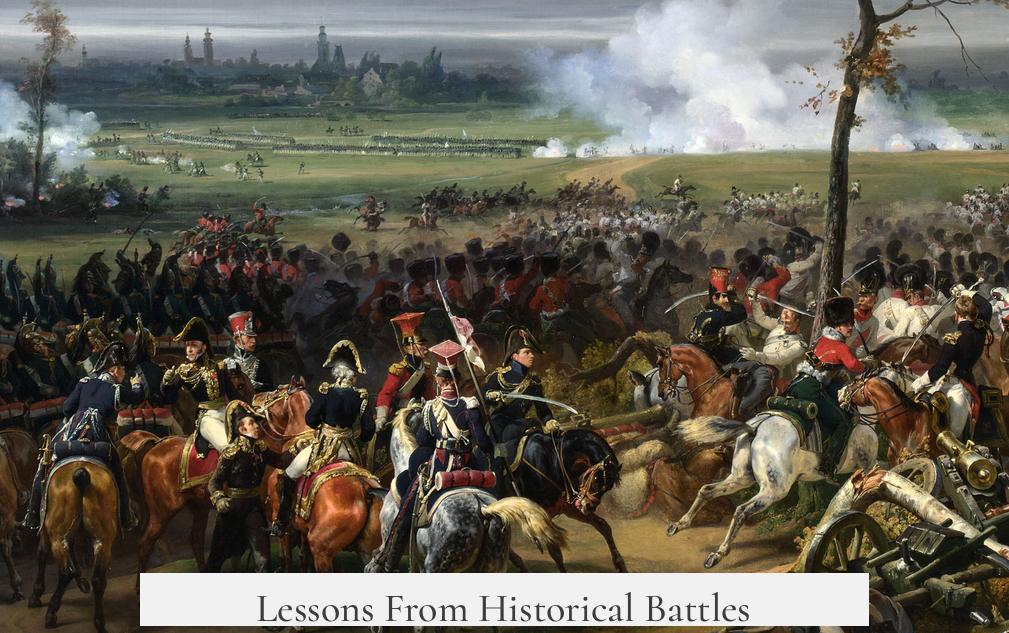
Take the Battle of Jena in 1806. French dragoons were considered the weak link, sometimes flanked by cuirassiers to keep them in line. Yet, their bulk presence was important to maintain pressure and cover vulnerabilities. Later in the Peninsular War in Spain, French dragoons excelled. Facing superb British heavy cavalry, the dragoons compensated with mobility and numbers, proving Napoleon’s faith in them was justified.
At Waterloo, the diversity of cavalry shone. The Kingdom of the Netherlands fielded three carabinier regiments, adding to the mix alongside British and Prussian forces. British Household Cavalry, still unarmored, rode with a punch, displaying the raw courage of unshielded horsemen against mail-clad foes.
Practical Takeaways for Military Buffs and History Lovers
- Armor’s Price: Protection came at a cost. Heavier armor meant slower horses and fatigue. Efficient commanders had to balance shock power against mobility.
- Versatility Matters: Dragoons’ evolution from mounted infantry into multi-role cavalry units shows how adaptability wins battles. Don’t underestimate multipurpose troops.
- Elite vs. Common Troops: Horse Grenadiers and Guard Cavalry had prestige, but often it was the “common” cavalry like carabiniers and dragoons who bore the brunt of battle.
- Reconnaissance is Key: Light cavalry’s scouting and screening roles remind us that knowing the battlefield is half the fight.
Wrapping Up the Horsepower
The cavalry in the Napoleonic Wars was a layered, multi-faceted force. It was not just about charging into battle but about timing, protection, flexibility, and intelligence gathering. The era’s cavalry units—from armored cuirassiers thundering into enemy ranks to nimble horsemen scouting ahead—combined strategy with surprises that shaped Europe’s fate.
Next time you think of Napoleonic cavalry, remember: it’s a fascinating blend of muscle, brains, and style riding hoof to hoof into history.
